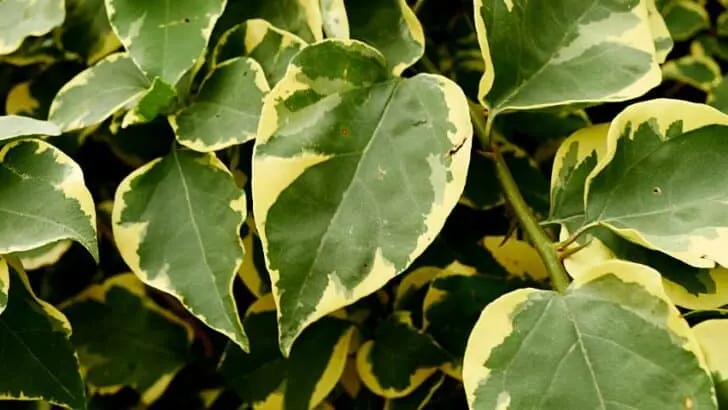Imagine casually browsing through a serene nursery when you suddenly come across the most beautiful Bougainvillea you’ve ever seen.
You don’t hesitate; you pick up your latest passion, pay for it and take it home.
Over the next few weeks or months, you lovingly care for your new buddy, only to watch in horror as its leaves begin to turn white! What has gone wrong?
In this article, let’s find out why Bougainvillea turns white.
Table of Contents
Bougainvillea Leaves Turning White
Bougainvillea turns white for various reasons ranging from deficiency-related problems like chlorosis to environmental conditions like too much sunlight or too-cold ambient temperature to attacks by pests like Leaf Miners and Powdery Mildew. Bougainvillea can also change color naturally on its own.
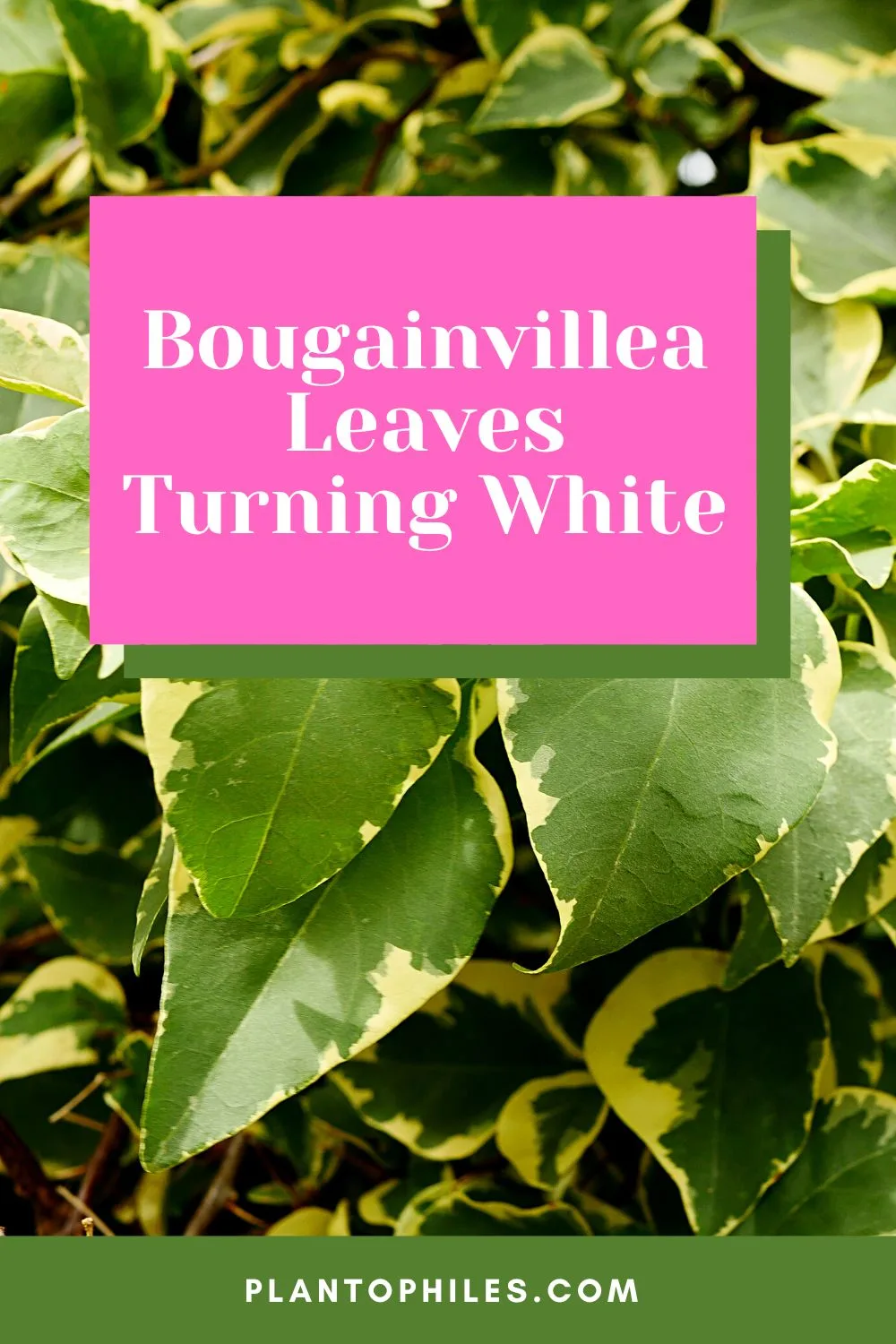
1) Color Change in Bougainvillea
If you don’t find yourself transfixed by a particular color of Bougainvillea, you might even be happy and excited to see the plant changing color by itself.
Bougainvillea can and does change color without notice for multiple reasons, the least intuitive of which is cross-breeding.
Due to cross-breeding, just as humans can transition between blonde and brunette and vice versa as they grow older, so can cross-breed Bougainvillea change from one color to another.
If the other color is white, then white Bougainvillea is what you will have to live with.
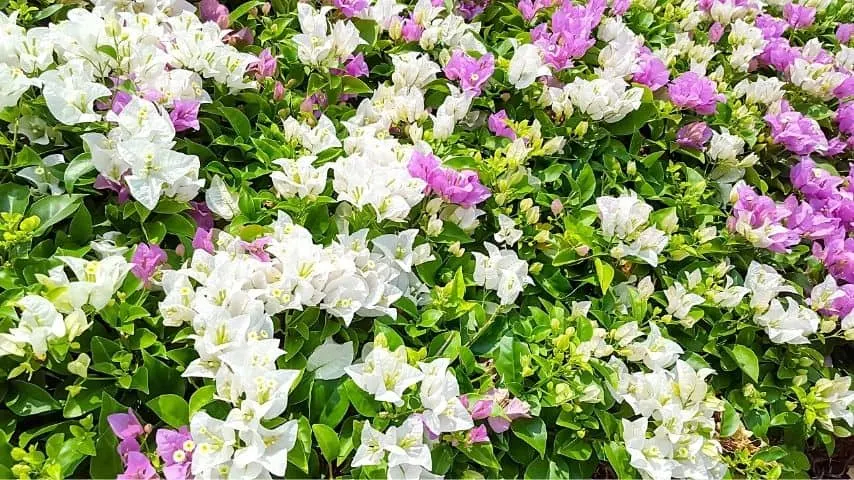
Generally, Bougainvillea deepens or lightens its color and doesn’t usually go through complete transformations (although that has been known to happen).
The change of color can be total across the bract or affect only a part of it. Sometimes, in this latter case, the effect can be startlingly beautiful and electric. It’s all a bit of a gamble, though.
What a “Bract” is
What looks to you and me as flowers on Bougainvillea are actually specialized structures resembling leaves.
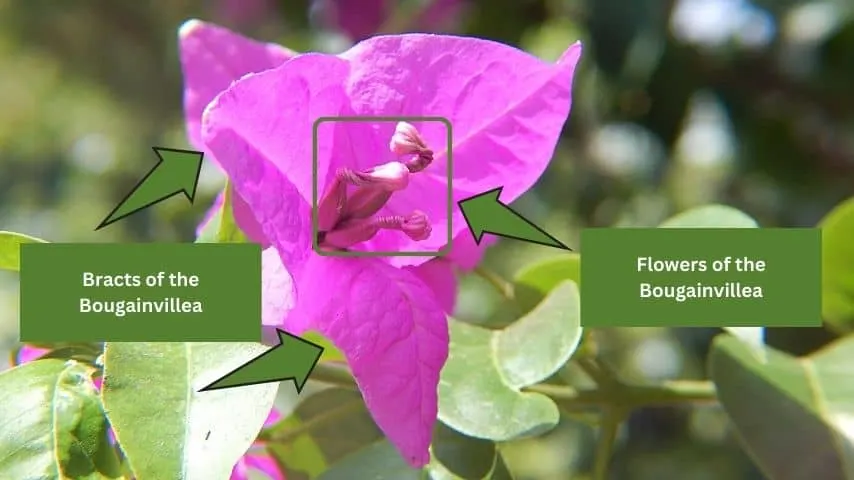
Follow this link to see a clear and beautiful example of a Bougainvillea’s bract nestling three flowers, one of which has bloomed.
2) Bougainvillea’s Natural Colors
Coming in a range as wide as it does, asking, “What are Bougainvillea’s natural colors?” is a reasonable question deserving of an answer.
Bougainvillea naturally appears in white, yellow, red, and purple.
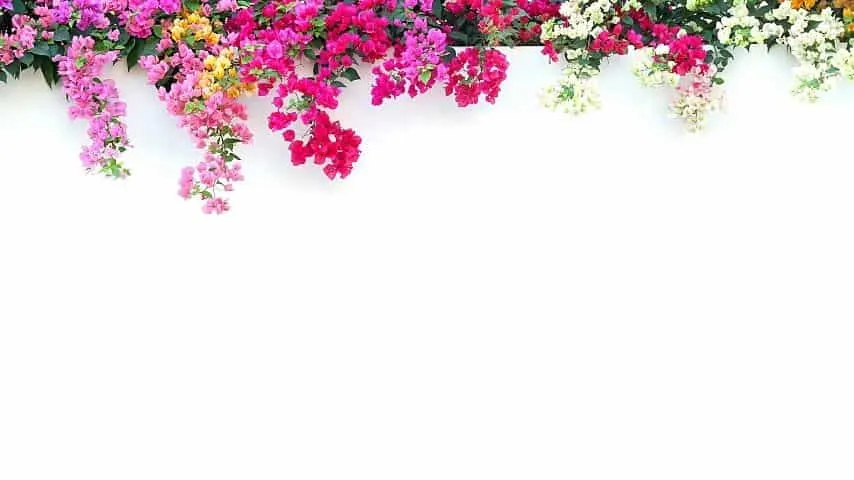
Now that I have taken the time to explain to you how Bougainvillea can flip from one color to another, and now that I’ve explained that one of the plant’s natural colors is white, you can see straightaway, I hope, that sometimes, Bougainvillea turns white “just because,” and there’s nothing to be alarmed about.
3) Chlorosis in Bougainvillea
Chlorosis is a condition in plants in which the plant has insufficient chlorophyll (the stuff that makes plants green).
Chlorophyll is an enzyme that helps the plant convert sunlight into energy and is the plant’s primary energy source for processing nutrients and water brought up from the soil through the plant’s root system.
I like to think of chlorophyll as the solar panels that capture energy from sunlight, powering the machinery that does all the food and water processing in the plant.
Chlorophyll depends on iron to work, so insufficient iron in the soil will cause Bougainvillea grief in the form of chlorosis. (Actually, all green plants need sufficient iron, so always suspect an iron deficiency when any green plant starts to turn white.)
In Bougainvillea, identifying chlorosis is a matter of noting that the plant’s bracts have turned white and wrinkly while its veins remain dark.
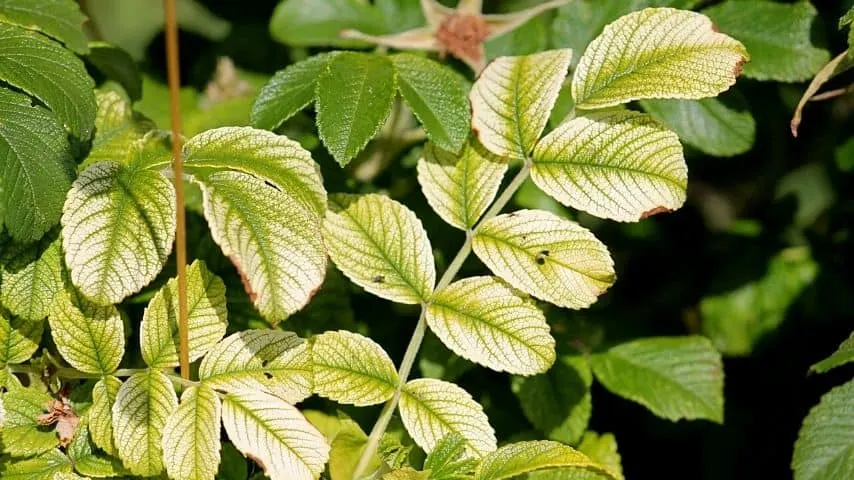
Fortunately, dealing with chlorosis is easy. Use chelated iron fertilizers on your Bougainvillea and ensure that you maintain a soil pH of 5.5 to 7 so that the plant can absorb iron from the earth.
4) Environmental Conditions
a) Too Much Sunlight
Bougainvillea doesn’t mind a bit of sun, but it is sensitive to temperature:
- You can expose Bougainvillea to direct, strong sunlight, but keep the plant well irrigated
- Don’t bother planting Bougainvillea if the ambient temperature routinely passes 100°F (38°C)
In other words, it isn’t the sun per se that the plant might not like, it’s the high temperatures that too-strong sunlight can cause.
To help your plant, keep it away from secondary heat sources like reflected sunlight or against surfaces like metal rails and other objects that get scalding hot when left in the sun for long periods.
b) It is Too Cold for Bougainvillea
Bougainvillea doesn’t do well in low-temperature conditions. The plant thrives in average temperatures of between 70°F and 85°F (20°C to 30°C), being natively tropical plants.
Bougainvillea can survive an occasional cold spell of temperatures as low as 40°F (4°C), but only for a day, or at most, two days. Anything longer than that and Bougainvillea will die.
Read more about how to care for Bougainvillea in winter.
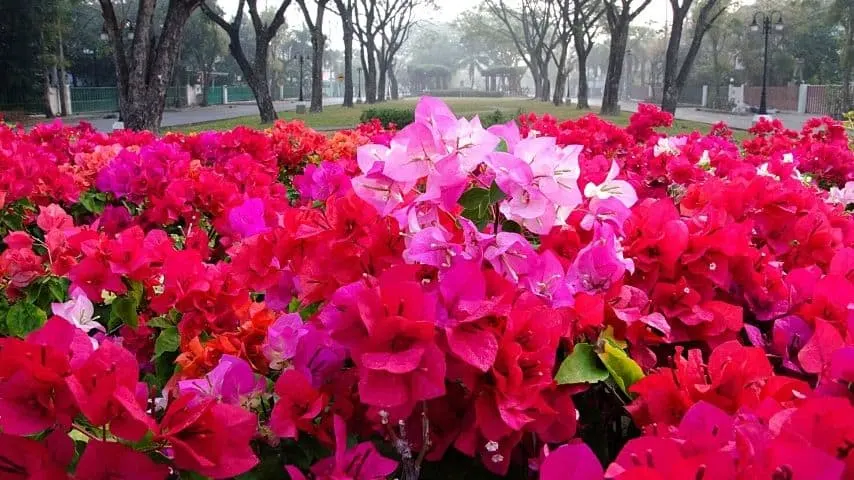
If temperatures routinely dip below the 70°F threshold, Bougainvillea will wilt, and its bracts will start to turn white.
We don’t yet have the technology to deal with a cold spell; perhaps we never will.
At present, maybe the best we can do is place the plant under a polyurethane sheet (taking extreme measures to ensure that the sheet and the Bougainvillea don’t touch because that would cause the plant even more injuries).
Of course, bring potted Bougainvillea inside somewhere warm.
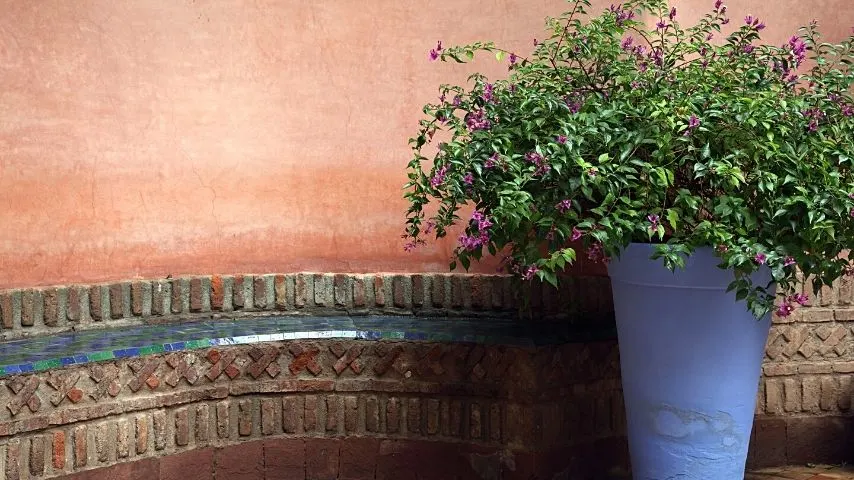
5) Leaf Miners, Powdery Mildew, and other pests
Each pest has a different signature that will help you figure out what’s going on with your Bougainvillea.
For example, Leaf Miners leave a spidery network of whitish latticework on the plant’s leaves. Given enough of these litter critters, Bougainvillea’s leaves will turn entirely white.
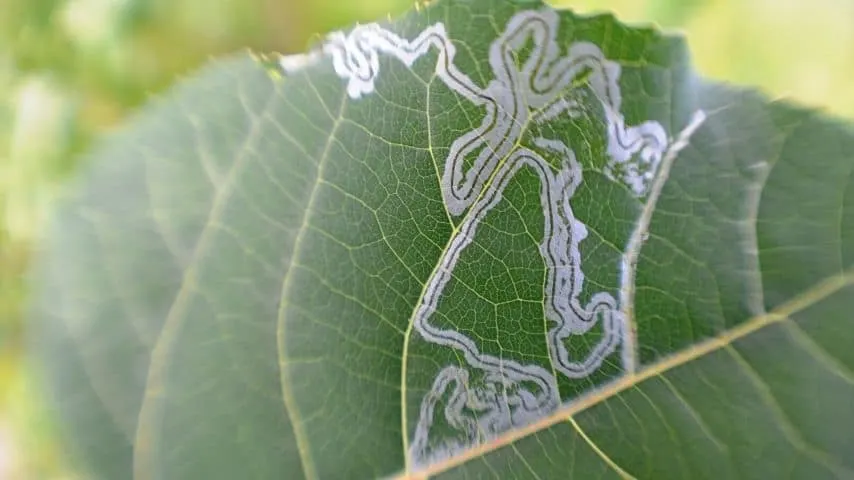
Powder Mildew will first appear as white spots at the tips of leaves and bracts as the fungus spreads over the plant. Left unchecked, Bougainvillea will soon be entirely white – and dead.
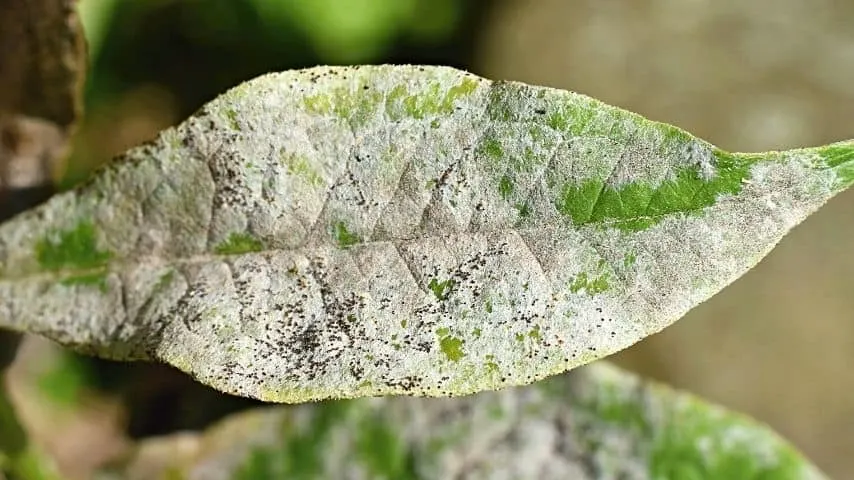
There are various home remedies you can look up online and try, but I think that it might be best either to consult another gardener who has successfully faced down a similar infestation or your local nursery or university botany department.
Frequently Asked Questions about Bougainvillea Leaves Turning White
Is it true that white is a natural color of Bougainvillea?
Bougainvillea can be white, yellow, red, or purple. When cross-bred, these plants can turn from their current color to any in their ancestral lineage, so don’t be confused if your Bougainvillea makes an unexpected and dramatic color change one day.
How do I know if a color change in my Bougainvillea is natural or results from a problem?
When healthy, Bougainvillea’s bracts are smooth-surfaced and wrinkle-free. But, when diseased, they become wrinkled like old, thin paper. Examine your Bougainvillea’s bracts closely and check whether they are smooth or wrinkled. If the latter, the plant is ill, and its whiteness is an injury.
Conclusion Bougainvillea Leaves Turning White
Bougainvillea leaves are turning white for the following reasons:
- Chlorosis
- Too much sunlight
- Cold temperature
- Pest attacks such as leaf Miners and Powdery Mildew
- As a natural occurrence

Daniel has been a plant enthusiast for over 20 years. He owns hundreds of houseplants and prepares for the chili growing seasons yearly with great anticipation. His favorite plants are plant species in the Araceae family, such as Monstera, Philodendron, and Anthurium. He also loves gardening and is growing hot peppers, tomatoes, and many more vegetables.

